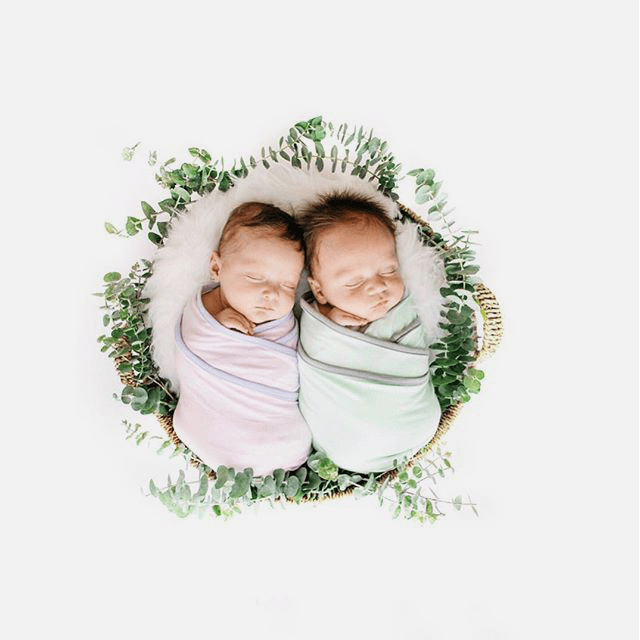Becoming a parent involves familiarizing yourself with a number of new terms, and “TOG rating” is one of them. TOG, which stands for Thermal Overall Grade, measures the warmth of garments and bedding, and the higher the TOG rating, the warmer the product is.
Knowing what TOG is and using the appropriate TOG for the season and room temperature helps us keep our babies comfortable and safe for sleep. Since babies can’t regulate their body temperature the way adults can, it’s important to make sure they’re always dressed appropriately—especially for sleep. Overheating is a risk factor for SIDS, and a baby who is too hot or too cold is more likely to wake up throughout the night.
Here’s everything we’ll be going over to make sure you know everything there is to know about TOG:
- Why TOG is important
- What TOG means
- How to choose a TOG
- What TOG baby should wear
- Ideal room temperature
- Dressing baby for sleep
All of this information will help you keep your baby sleeping safely and soundly in the ambient temperature of their nursery while decreasing their risk of overheating. While loose blankets aren’t recommended for sleep, a sleep bag is a wearable blanket that comes in different TOG ratings to suit different climates and seasons. Kyte Baby sleep bags come in 0.5, 1.0, and 2.5 TOGs, and are an easy way to keep your little one warm and comfortable without overheating.
Why is TOG important?
It’s important to pay attention to the TOG rating of your garment because babies do not regulate their own temperature well. We may know that we need to support them through this, especially as newborns, but it is easy to get confused about how to layer them appropriately!
While it’s common for parents to think warmer is better for sleep, it’s important to remember that overheating is a risk factor for SIDS. So, be mindful of what TOG you’re using, how many layers you use, and what the room temperature is while your little one is sleeping.
Just like you, your baby will be uncomfortable if they’re too hot or too cold. Here are some tips for keeping a baby’s temperature consistent:
- Keep the room between 68-72 degrees (purchase an indoor thermometer for the nursery if you need to; some video monitors will display room temperature but are not always accurate)
- Judge by how you feel (if you feel too warm, then your baby likely is, too!)
- If you add a layer for yourself, add one for your baby
To check if your baby feels too cold or too hot, feel the back of their neck, back, or chest. Do not use extremities to judge body temperature because there is less blood flow and hands/feet will always feel naturally cooler than the rest of the body.
Signs of being too warm:
- Sweating
- Damp hair
- Heat rash
- Red cheeks
- Heavy breathing
If your baby is too cold, they may be harder to rouse or lethargic and have a decreased appetite/difficulty eating or not wanting to eat at all.
What is TOG, and What Does That Have to Do with Temperature Regulation?
TOG is the measure of thermal resistance. It stands for Thermal Overall Grade and is the standard of measure for how much heat a garment retains. In other words, this is how warm a garment keeps you, which is why products like duvets, baby sleepwear, socks, and even carpets, have TOG ratings.
What TOG Should Your Baby Wear and What Should the Room Temperature Be?
The TOG should be chosen based on the temperature in your child’s nursery, not the temperature outside. If your home stays in the recommended range of 68-72 degrees Fahrenheit, then a 1.0 TOG would be appropriate.
The colder the room, the higher the TOG. The warmer the room, the lower the TOG. While the outside temperature can change the inside temperature, you don’t want to choose a TOG based only on what season it is. If it is 50°F outside but 72°F inside, you would still opt for a 1.0 TOG sleep bag.
Regardless of the season, the ideal temperature for your baby’s room is between 68 and 72 degrees Fahrenheit. If your house is consistently within this range, a 1.0 TOG sleep bag is the appropriate choice. If your room temperature is between 74 to 78 degrees Fahrenheit, you will want to choose a sleep bag in 0.5 TOG. For temperatures between 61 to 68 degrees Fahrenheit, choose 2.5 TOG.
Dressing Your Baby for Sleep
A good rule of thumb for making sure your baby is dressed comfortably is to dress the baby in one layer more than you are wearing as an adult. Just remember that each baby is different, so this is just a guideline, and you should always check your baby to determine the appropriate TOG or how many layers to use with your sleep bag!
Just like adults can be sensitive to temperature changes, so can your baby. If two adults are sitting in a 70°F room, one might be perfectly comfortable and the other might be shivering. This is why TOGs and layering are just general recommendations. We all have unique and individual preferences for what temperature we sleep best in—including babies!
Here’s a helpful guide for dressing your baby for sleep with a Kyte Baby sleep bag:
- 1.0 TOG with a short or long sleeve onesie AND a footie if the temperature is lower than 69°F
- 2.5 TOG with a short or long sleeve onesie AND a footie if the temperature is lower than 61°F
- 0.5 TOG with only a diaper if the temperature is warmer/baby is sweating
- 1.0 TOG with only a diaper if the temperature is over 75°F
Author Bio: Ashley Olson is a certified pediatric sleep consultant, owner of Heaven Sent Sleep, and passionate about helping new parents, experienced parents, and desperate and sleep-deprived parents form healthy sleep habits for their children.
She has over 3 years of experience in working with families and has completed over 150 hours of coursework plus continuing education related to infant and toddler sleep. The focus of her work is on fostering a routine that grows your bond with your child while improving their sleep habits. She specializes in custom sleep plans and one-on-one support in changing sleep practices!













